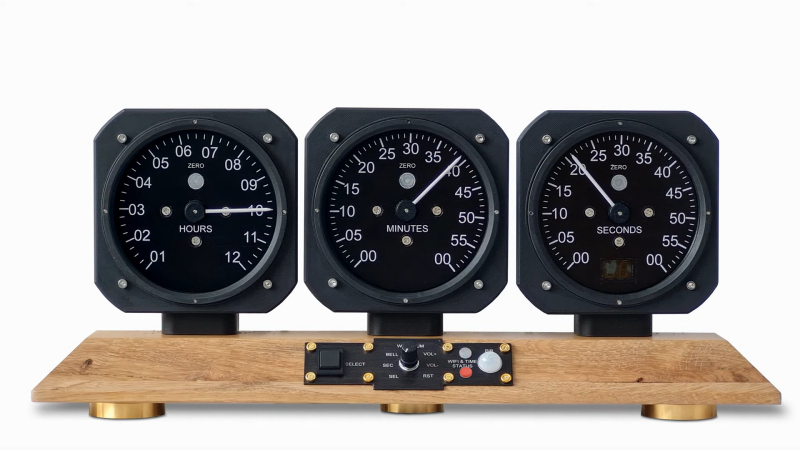There’s something cool about the visual design language used in the aviation world. You probably don’t get much exposure to it if you’re not regularly flying a plane, but there are other ways you can bring it into your life. A great example would be building an aviation-themed clock, like this stylish timepiece from [oliverb.]
The electronic heart of the build is an ESP32. This wireless-capable microcontroller is a popular choice for clock builds these days. This is because it can contact network time servers out of the box, which allows you to build an incredibly capable and accurate clock without any additional parts. No real-time-clock needed—just have the ESP32 buzz the Internet for an accurate update on the regular!
As for the display itself, three gauges show hours, minutes, and seconds on aviation-like gauges. They’re 3D-printed, which means you can build them from scratch. That’s a touch easier than having to go out and source actual surplus aviation hardware. Each gauge is driven by a NEMA17 stepper motor. There’s also an ATMEGA328 on hand to drive a 7-segment gauge on the seconds display, and a PIR sensor which shuts the clock down when nobody is around to view it.
It’s a tidy build, and one with a compelling aesthetic at that. We’ve seen some similar builds before using real aviation gauges, too. Video after the break.















There is just one major design flaw:
Aviators use the 24 hour format.
(And those that do not, should be grounded forever.)
Aircraft clocks use 24 or 12 hour formats.
A very neat project and well documented. Yes, I would expect 24hr time display and anyway- where is the AM/PM indication here? I’ve been drinking all night and what time is it?
Don’t think I have ever seen an analogue 12hr clock with am/pm indicator. Digital clocks set to 12hr format have them for some reason.
For that authentic retro aviation feel, we need some homebrew radium paint for the dials (and your own DIY Superfund site!)
Perhaps Fluroscein/Uranin paint with a few IR-Leds will do, too.
Using three dials to tell the time isn’t exactly practical. And I’m not even talking about non-360-degree dials.
Surprisingly, real aircraft clocks only have one dial—you know, the ones with three hands (a bit like on watches)…
This clock was designed to sit on your desk not in an aircraft. If you want a one dial clock buy a cheap quartz movement and hang it on the wall. 360 degree dials have one major drawback- they are just boring to watch with no flyback or fly forward.
I literally had just bought old aviation dials to do exactly this… Dang beat to the punch
I have three dials sitting on my desk. They have been there for six years waiting to do this. Maybe this is the year I build this clock…. as well as complete the other hundred unfinished projects
There is something odd with the videos and the front view images. They look kind of AI generated.
Filmed with a Samsung S20 at 4K then cut down to FHD. The cockpit background still is AI generated only.
Maybe better to do 1 regular clock and day and month for the other two?
You don’t need another processor for a second display, there are loads of ports on an ESP32.
I built a clock with an ESP32 that had an analogue display on a TFT, a digital display and a binary display. It picked up the time from the server as this does, could be set to + or – time zone or daylight saving time, and one could choose from a list of the nearby WiFi networks and enter a password.
Yes, I’m very proud of it!